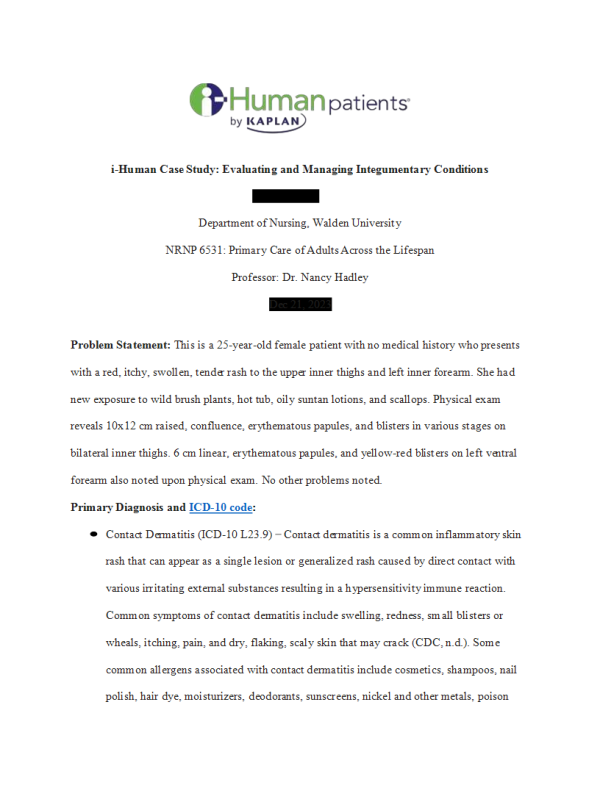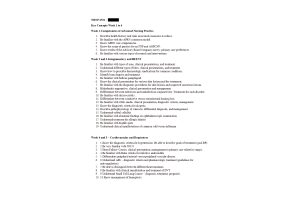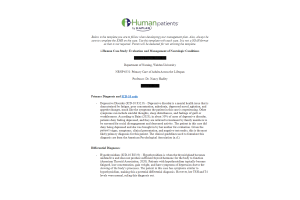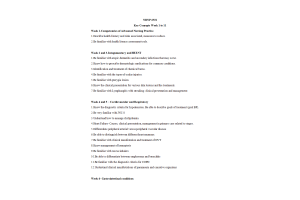NRNP 6531 Week 2 Assignment; i-Human Case Study; Evaluating and Managing Integumentary Conditions
- $25.00
Document Preview
Problem Statement: This is a 25-year-old female patient with no medical history who presents with a red, itchy, swollen, tender rash to the upper inner thighs and left inner forearm. She had new exposure to wild brush plants, hot tub, oily suntan lotions, and scallops. Physical exam reveals 10x12 cm raised, confluence, erythematous papules, and blisters in various stages on bilateral inner thighs. 6 cm linear, erythematous papules, and yellow-red blisters on left ventral forearm also noted upon physical exam. No other problems noted.
Primary Diagnosis and ICD-10 code:
- Contact Dermatitis (ICD-10 L23.9) – Contact dermatitis is a common inflammatory skin rash that can appear as a single lesion or generalized rash caused by direct contact with various irritating external substances resulting in a hypersensitivity immune reaction. Common symptoms of contact dermatitis include swelling, redness, small blisters or wheals, itching, pain, and dry, flaking, scaly skin that may crack (CDC, n.d.). Some common allergens associated with contact dermatitis include cosmetics, shampoos, nail polish, hair dye, moisturizers, deodorants, sunscreens, nickel and other metals, poison
ivy, oak, gloves, shoes, topic medications, plastic, elastic in clothing, and glues (Adler & DeLeo, 2021). The patient in this case presented with symptoms and exposures that align with the diagnosis of contact dermatitis. The guidelines I used to formulate this diagnosis are from the CDC (n.d.), ePocrates (n.d.), and the Leik (2020) textbook.
Differential Diagnoses:
- Bacterial Folliculitis (ICD-10 L66.2) – Bacterial folliculitis is a common infection of the hair follicle(s). Bacterial folliculitis presents as small, round pustules or erythematous papules (Winters, 2022). It is usually a benign and self-limiting skin condition. It can be caused by hot tube exposure, which was mentioned by the patient during the history and physical, making this a possible differential diagnosis……….. Continue




























































